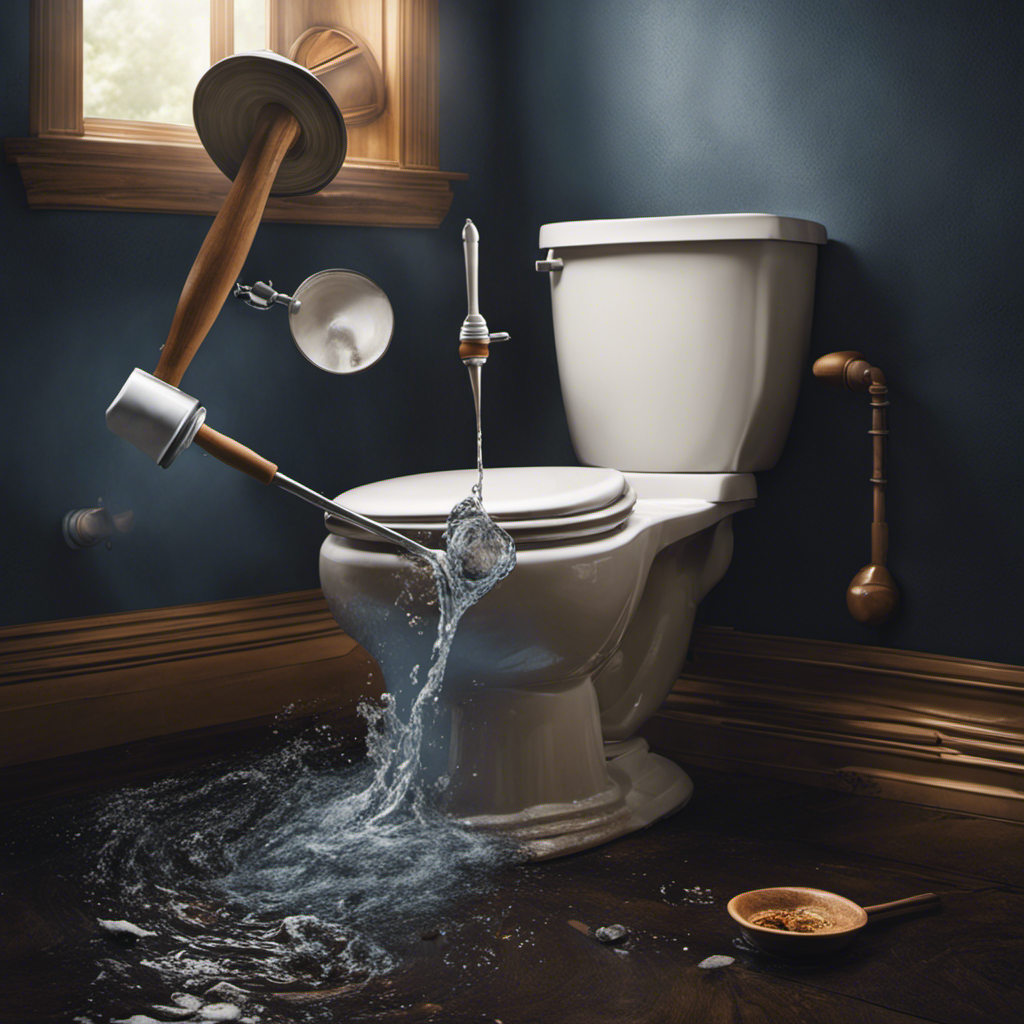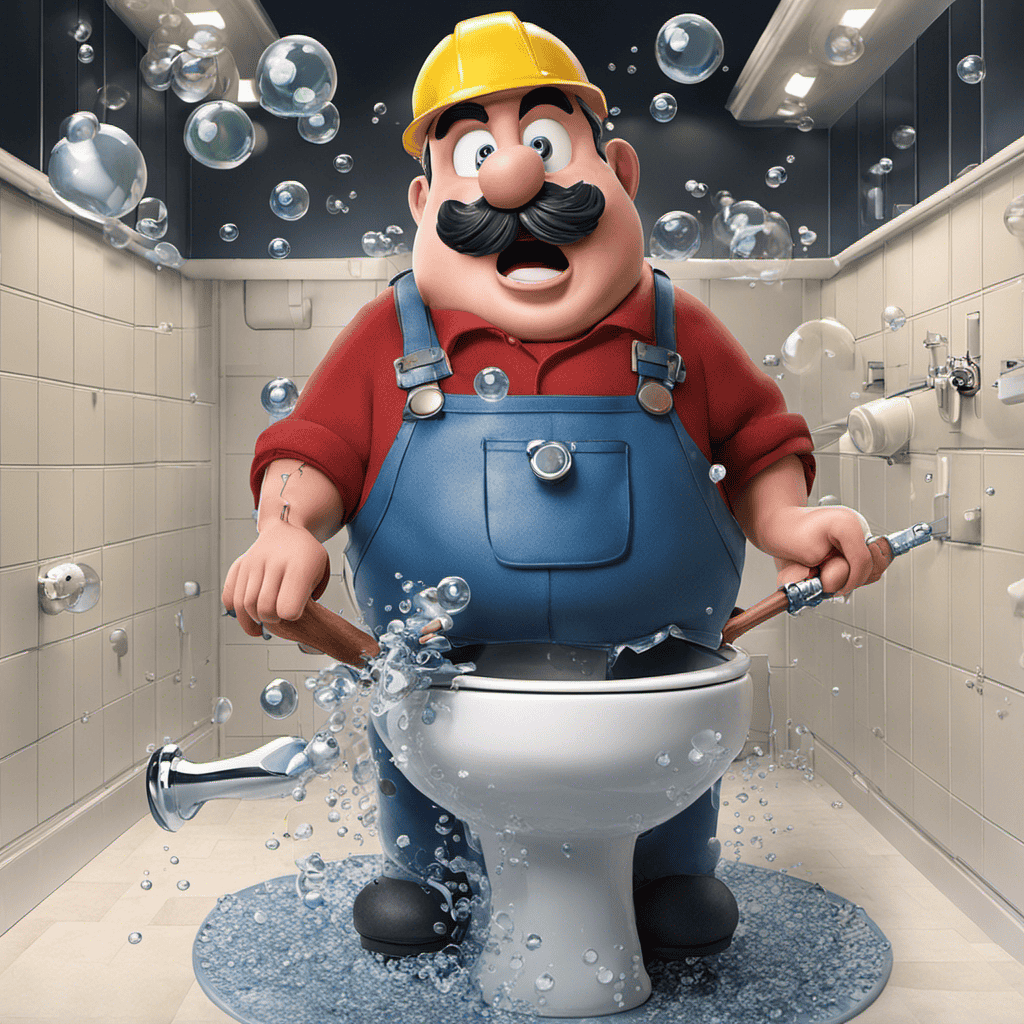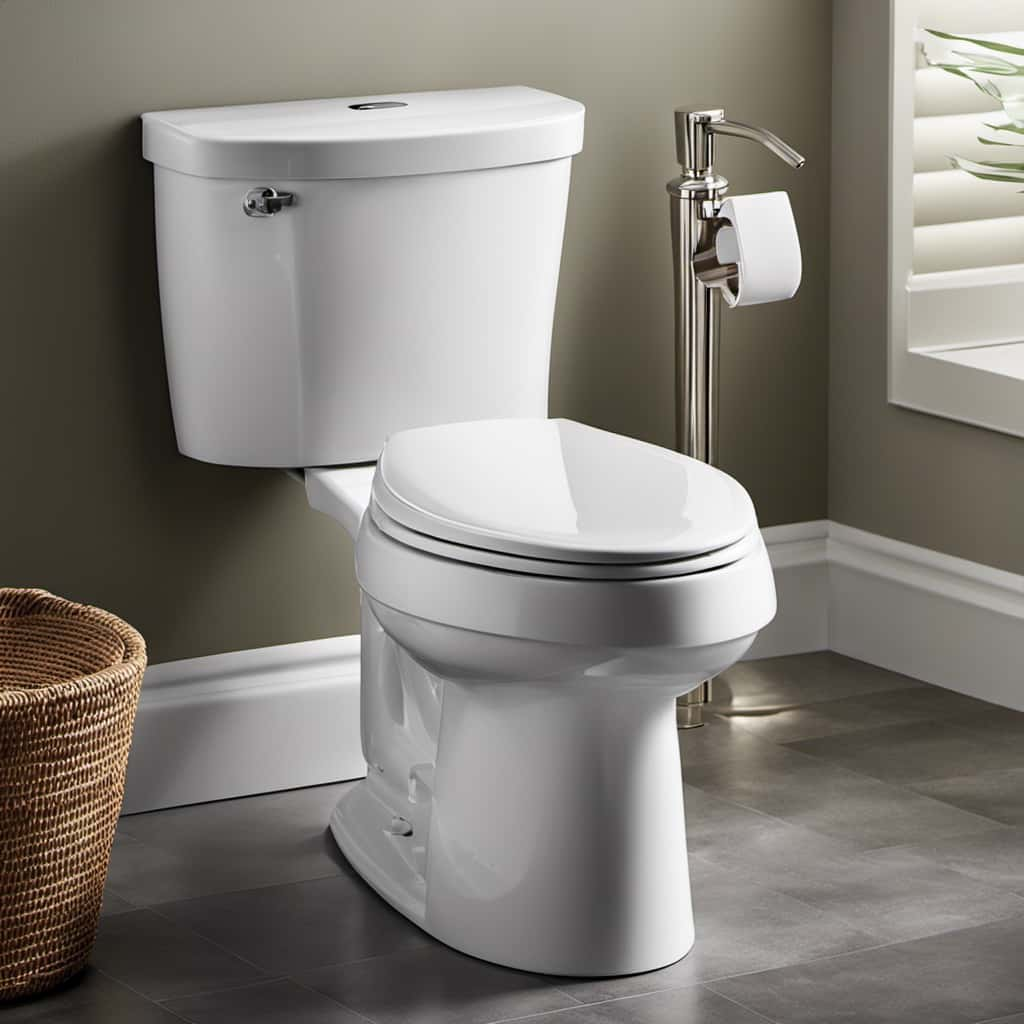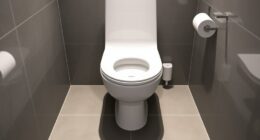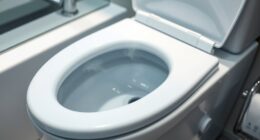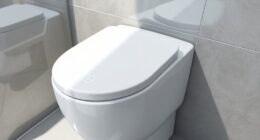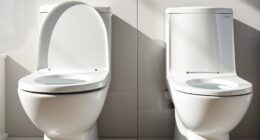Like a well-oiled machine, your toilet should flush smoothly and efficiently. But have you ever wondered why it doesn’t always get the job done? Fear not, for we have the answers you seek.
In this article, we will delve into the common causes behind incomplete flushes and provide you with step-by-step solutions to improve your toilet’s performance. From understanding the flushing mechanisms to troubleshooting flush issues, we’ve got you covered.
Say goodbye to frustrating flushes and hello to a fully functioning throne.
Key Takeaways
- Clogged or blocked toilet drain
- Faulty toilet flush handle
- Clogged toilet drain or blocked vent pipe
- Unusual noises during flushing
Common Causes of Incomplete Flushes
One common cause of incomplete flushes is a clogged or blocked toilet drain. When your toilet tank is full and you press the flush lever, the water should flow forcefully into the toilet bowl, creating enough pressure to carry away the waste.
However, if the drain is clogged or blocked, the water cannot flow freely, resulting in a weak flush. This can happen due to various reasons, such as accumulation of debris, mineral deposits, or even foreign objects obstructing the drain.
Additionally, insufficient water pressure can also contribute to incomplete flushes. If the water pressure in your plumbing system is low, it may not provide enough force to effectively flush the toilet.
It is important to address these issues promptly to ensure proper flushing and prevent further plumbing problems.
Understanding Toilet Flushing Mechanisms
If you’ve ever experienced a toilet that doesn’t flush properly, you’re not alone. Common flushing problems can include weak flushes, clogs, and water that doesn’t fully drain from the bowl.
Understanding the mechanisms behind a toilet flush can help you identify and fix these issues, ultimately improving the efficiency of your toilet’s flush.
Common Flushing Problems
Have you noticed that your toilet doesn’t flush all the way? This is a common problem that many people experience.
One possible reason for this issue is a faulty toilet flush handle. The handle is responsible for initiating the flushing process by lifting the flapper inside the toilet tank. If the handle is loose or broken, it may not lift the flapper completely, resulting in a weak flush.
Another reason for incomplete flushing could be a clogged toilet drain or a blocked vent pipe. These blockages can restrict the flow of water, preventing the toilet from flushing properly.
Additionally, if you hear unusual noises when flushing, such as gurgling or bubbling, it could indicate a problem with the toilet’s flushing mechanism.
It is important to address these issues promptly to ensure your toilet flushes efficiently.
Improving Toilet Flush
To improve your toilet flush, you should check the water level in the toilet tank. Proper toilet flush maintenance is crucial for efficient flushing and preventing clogs.
Start by lifting the lid of your toilet tank and observe the water level. It should be approximately one inch below the overflow tube. If the water level is too low, it can result in a weak flush.
Adjust the water level by turning the water valve clockwise to decrease or counterclockwise to increase the water level. Additionally, consider checking and adjusting the water pressure in your home. Low water pressure can also affect the flushing performance.
Steps to Improve Toilet Flush Performance
One way you can improve toilet flush performance is by checking the water level in the tank. If the water level is too low, it may not provide enough force to effectively flush waste down the drain. To check the water level, simply remove the tank lid and observe the water level mark on the inside of the tank. Adjust the water level by adjusting the float or fill valve accordingly.
Another way to improve flush performance is by using a toilet plunger. A plunger creates pressure that helps dislodge any blockages in the toilet drain, allowing for a more efficient flush.
By ensuring the water level is adequate and using a plunger when needed, you can improve the overall flush performance of your toilet.
Now, let’s move on to the signs of a clogged toilet drain.
Signs of a Clogged Toilet Drain
If you’re experiencing slow draining water, gurgling noises, or even worse, overflowing or backing up, these are all signs of a clogged toilet drain.
Slow draining water can indicate a partial blockage in the drain pipe, while gurgling noises often mean that air is trapped in the pipes due to a clog.
If your toilet is overflowing or backing up, it’s a clear indication that the drain is completely blocked and needs immediate attention.
Slow Draining Water
The water is draining slowly in your toilet, which could be causing the flushing issue. When you experience slow draining water, it is often a sign of clogged pipes or low water pressure.
Clogged pipes can occur due to various reasons, such as a buildup of toilet paper, foreign objects, or even tree roots infiltrating your plumbing system. This obstruction restricts the flow of water, resulting in slow draining.
Additionally, low water pressure can also contribute to this problem, as it reduces the force of water needed to effectively flush the toilet. It’s important to address these issues promptly to avoid further complications.
Now, let’s explore another potential sign of a faulty toilet – gurgling noises.
Gurgling Noises
When you hear gurgling noises coming from your toilet, it’s likely a sign of a plumbing issue. These gurgling noises can be quite alarming, but there are solutions to this problem. Here are three things to consider when dealing with toilet gurgling:
-
Ventilation: One possible cause of gurgling noises is a lack of proper ventilation in your plumbing system. When there isn’t enough air flowing through the pipes, it can create a vacuum effect that leads to gurgling. To solve this, you may need to have a professional plumber assess and potentially install additional ventilation.
-
Clogs: Another common cause of toilet gurgling is a clog in the plumbing system. Blockages can prevent water from flowing freely, causing air bubbles and gurgling sounds. Regular maintenance, such as using drain cleaners or snaking the pipes, can help prevent and clear clogs.
-
Sewer Line Issues: Gurgling noises can also be a sign of more serious problems with your sewer line. Tree roots, debris, or even a collapsed pipe can cause blockages and disrupt the flow of water, leading to gurgling. If you suspect a sewer line issue, it’s crucial to contact a professional plumber for proper diagnosis and repair.
Overflowing or Backing up
If you find that your toilet is overflowing or backing up, it is important to address the issue promptly to prevent any further damage. This problem can be caused by a variety of factors, including clogged pipes, a faulty flapper valve, or even low water pressure. To better understand these potential causes, take a look at the table below:
| Cause | Solution |
|---|---|
| Clogged pipes | Use a plunger or plumbing snake to remove the blockage |
| Faulty flapper valve | Replace the flapper valve to ensure proper water flow |
| Low water pressure | Check the water pressure in your home and address any issues |
Troubleshooting Toilet Flush Issues
One possible solution could be to check if the flapper is properly sealing the flush valve. Here are three quick troubleshooting steps you can take to address toilet flush issues:
-
Check the toilet flush handle: Ensure that the flush handle is securely attached to the flushing mechanism inside the tank. If it is loose or broken, it may not properly activate the flush.
-
Verify the toilet tank water level: If the water level in the toilet tank is too low, it may not provide enough force to properly flush the waste. Adjust the water level by adjusting the float or fill valve.
-
Inspect the flapper: A worn-out or misaligned flapper can cause water to leak into the bowl, leading to a weak flush. Check if the flapper is damaged or not sealing properly and replace if necessary.
Professional Solutions for Persistent Flush Problems
You can consider hiring a professional to address persistent flush problems.
When it comes to toilet flush repair, a professional plumber can provide the expertise and experience needed to resolve the issue effectively. They have the necessary tools and knowledge to diagnose the problem accurately and offer the most suitable solution.
Whether it’s a clogged drain, a faulty flushing mechanism, or a problem with the water pressure, a professional can identify the root cause and fix it efficiently. They can also provide valuable advice on maintaining your toilet’s flushing system to prevent future problems.
Don’t waste your time and effort attempting DIY fixes that may not address the underlying issue. Instead, opt for professional plumbing assistance to ensure a fully functioning and reliable toilet flush.
Conclusion
In conclusion, now that you understand the common causes of incomplete flushes and the inner workings of toilet flushing mechanisms, you have the knowledge to improve your toilet’s flush performance.
By following the steps outlined in this article, you can troubleshoot and resolve any issues you may encounter. However, if you find that the problem persists, don’t hesitate to seek the assistance of a professional plumber who can provide expert solutions.
Don’t let a weak flush hold you back from enjoying a fully functional and efficient bathroom experience.



